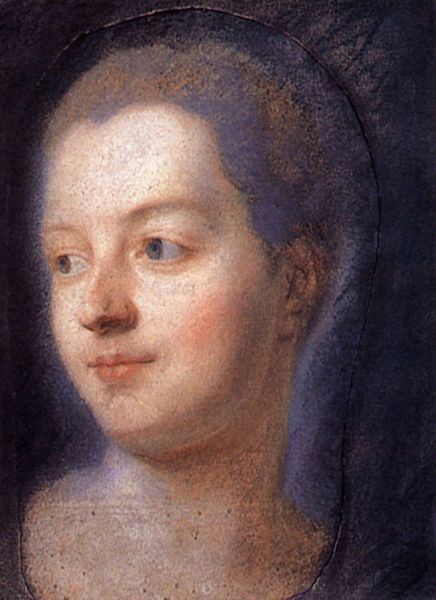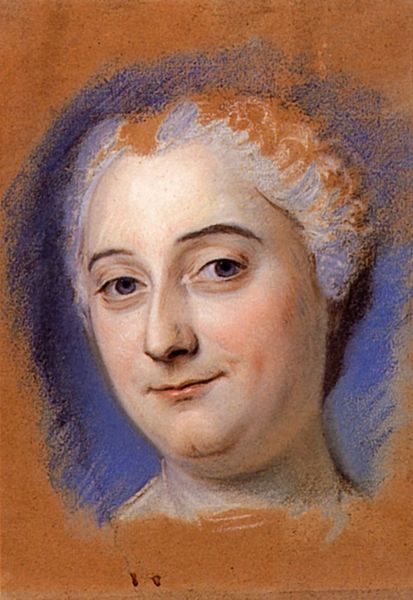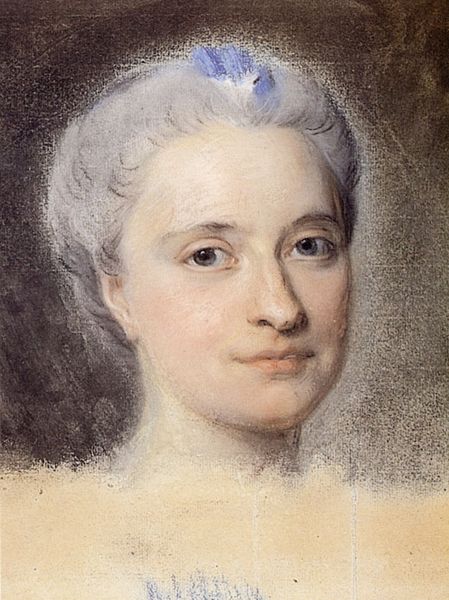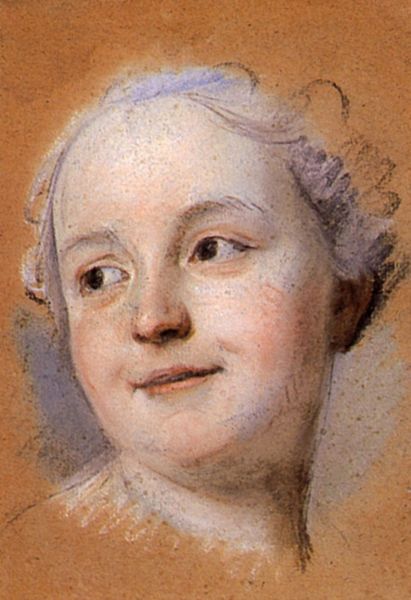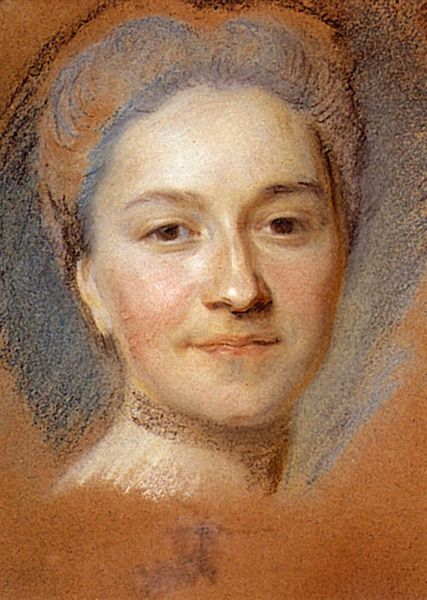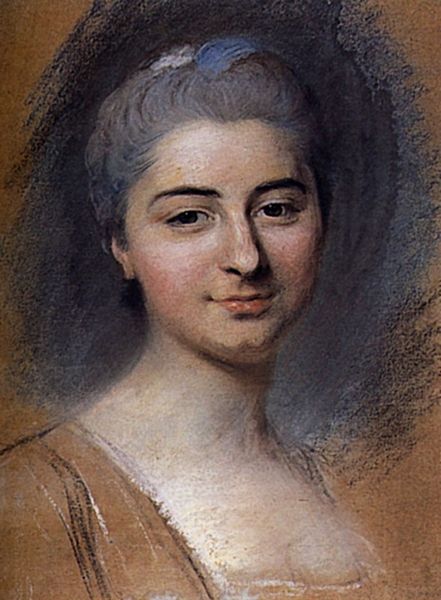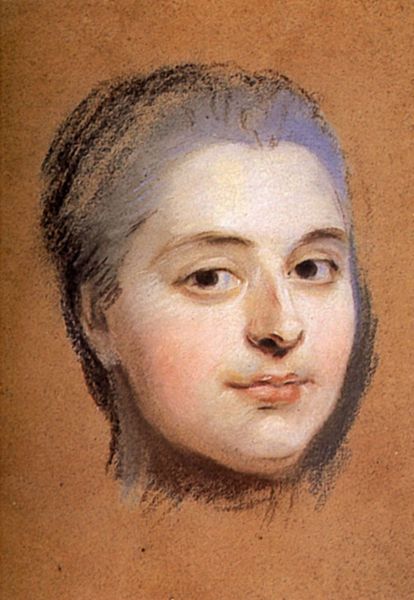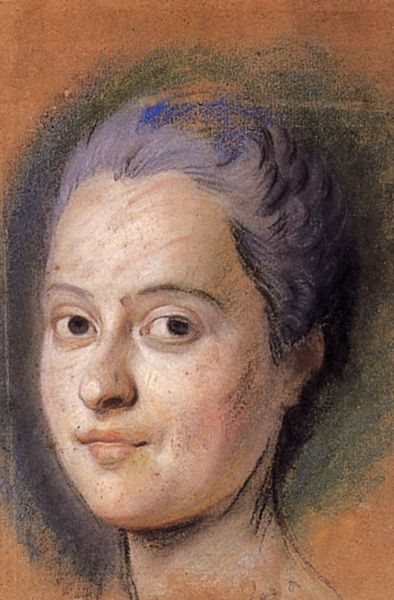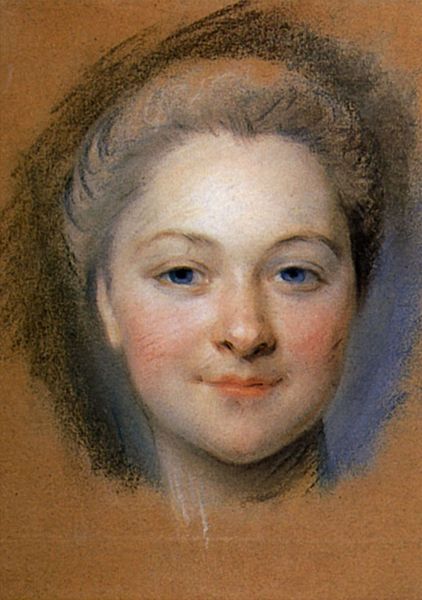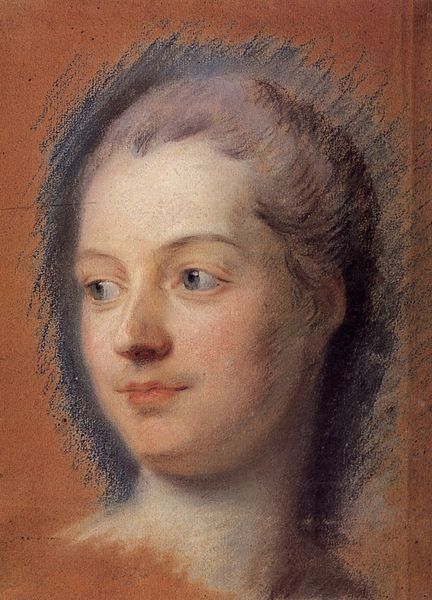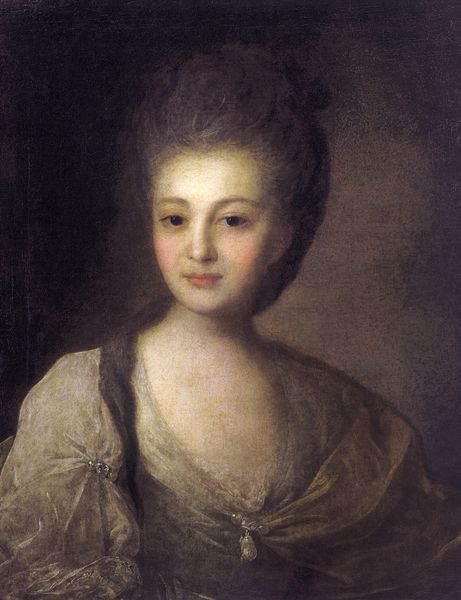
painting, pastel
#
portrait
#
painting
#
romanticism
#
pastel
#
history-painting
#
rococo
Copyright: Public domain
Curator: The delicacy of this artwork is immediately striking. Editor: Indeed! This is "Preparation to the Portrait of Madame de Pompadour" by Maurice Quentin de La Tour, and it is, quite remarkably, executed in pastel. Curator: Pastel lends such a unique quality. Think of the craftsmanship required to achieve this level of detail, particularly in the powdered pigment, mixing, and layering process of such fugitive material. The paper itself, its texture and preparation, would have been equally critical. Editor: Right. The texture brings so much softness to Madame de Pompadour, it also somewhat sanitizes the realities of 18th-century aristocratic women. While portraiture served the purpose of immortalizing sitters, the question remains: how far removed from reality was it? This portrait softens the realities, yet in some ways reveals the immense power that women, like Madame de Pompadour, exercised through culture. Curator: An interesting reading. Given its nature as a preparatory piece, one might ask what was discarded or augmented during the finalization, how artistic choices made then, still influence our vision of leadership even now? How do pastels differ in accessibility of their raw materials from oil paints? And how this influences art production at the time. Editor: That's crucial. We must remember that depictions of historical figures, no matter how seemingly objective, are social and political products. Pompadour wielded significant cultural power as Louis XV's mistress and patron of the arts; La Tour's representation solidified that narrative, albeit with the soft filter of pastel. Curator: And one has to think about commerce: portraiture provided wealth for La Tour and other painters. Also how patronage was crucial, influencing the material available and therefore aesthetics during the era, cementing hierarchies both financial and social. Editor: Precisely, let us consider those intricacies as we engage with art from bygone eras; we are actively engaging with the political history, not merely aesthetically looking at pretty pictures. Curator: Agreed, acknowledging the multifaceted forces behind a "simple portrait" expands and enriches our understandings and perspectives. Editor: Absolutely, the material, production, and the subject’s position within societal structures – a worthwhile exercise!
Comments
No comments
Be the first to comment and join the conversation on the ultimate creative platform.


